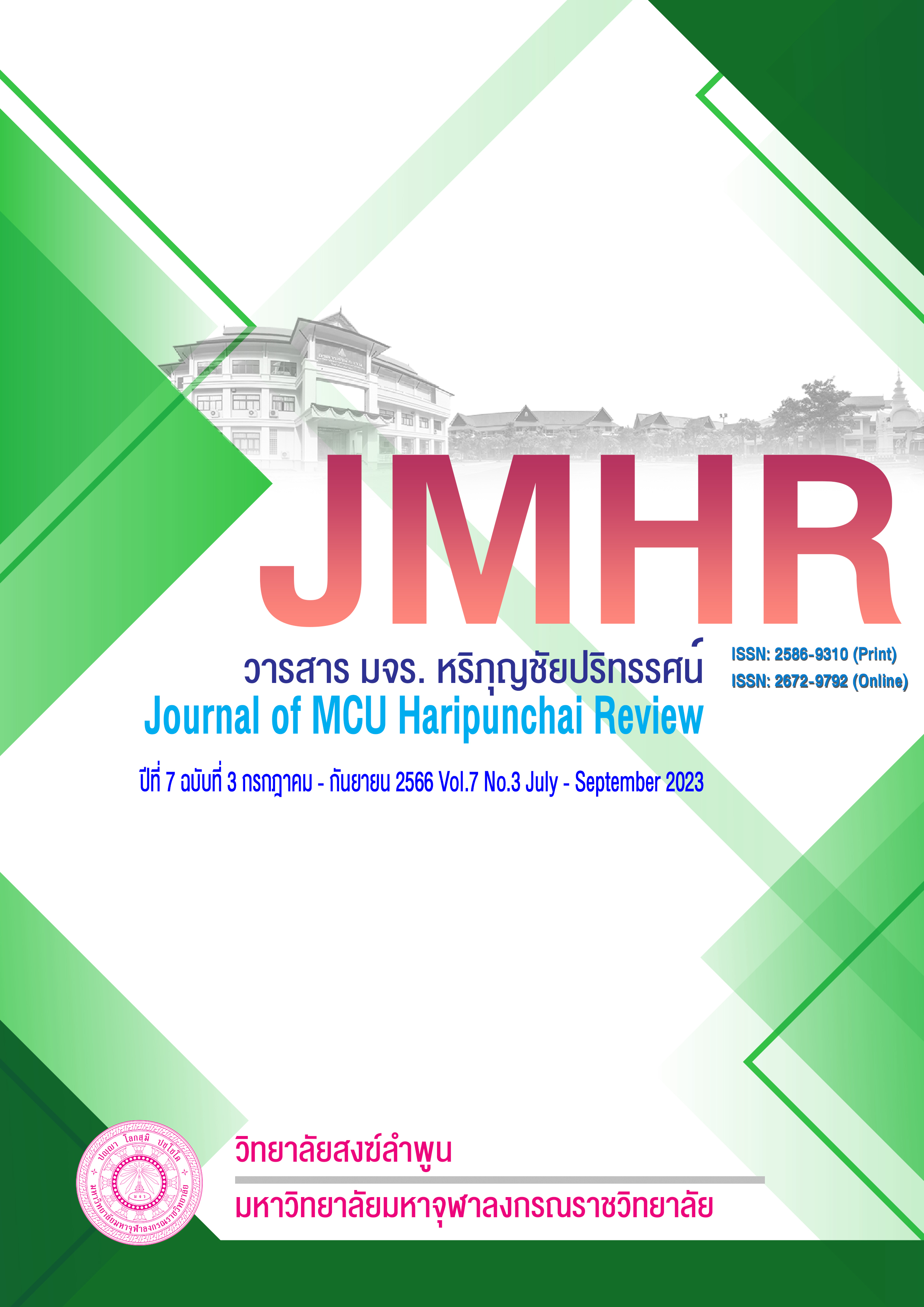การอนุรักษ์ภูมิปัญญาการใช้ประโยชน์พืชสมุนไพรท้องถิ่นบ้านนาป่าหนาด ตำบลเขาแก้ว อำเภอเชียงคาน จังหวัดเลย
Main Article Content
บทคัดย่อ
การวิจัยนี้มีวัตถุประสงค์เพื่อศึกษาชนิดของพืชสมุนไพรท้องถิ่น และเพื่อศึกษาการอนุรักษ์ภูมิปัญญาการใช้ประโยชน์พืชสมุนไพรท้องถิ่นบ้านนาป่าหนาด ตำบลเขาแก้ว อำเภอเชียงคาน จังหวัดเลย เป็นวิจัยเชิงคุณภาพมีวิธีการดำเนินการศึกษาโดยการสำรวจและเก็บตัวอย่าง พืชสมุนไพรท้องถิ่นตามเส้นทางเดินของหมู่บ้าน และจัดจำแนกหมวดหมู่ของพืชสมุนไพรท้องถิ่น ที่มีการนำมาใช้ประโยชน์ เพื่อระบุชนิด รวมทั้งสัมภาษณ์เชิงลึกปราชญ์ชาวบ้านและใช้แบบสัมภาษณ์กับชาวบ้าน เป็นจำนวน 161 คน ที่มีอายุมากกว่า 40 ปีขึ้นไป ในบ้านนาป่าหนาด ตำบลเขาแก้ว อำเภอเชียงคาน จังหวัดเลย ในด้านการอนุรักษ์ภูมิปัญญาการใช้ประโยชน์พืชสมุนไพรท้องถิ่น
ผลการศึกษาพบว่า
1) มีจำนวนพืชสมุนไพรท้องถิ่นที่มีการอนุรักษ์ภูมิปัญญาการใช้ประโยชน์พืชสมุนไพรท้องถิ่น 32 วงศ์ 49 สกุล 50 ชนิด การใช้ประโยชน์พืชสมุนไพรท้องถิ่นมีการนำส่วนต่าง ๆ ของสมุนไพรท้องถิ่นมาใช้ประโยชน์มากที่สุดคือส่วนช่วงใบ จำนวน 27 ชนิด
2) แนวทางการอนุรักษ์ภูมิปัญญาการใช้ประโยชน์พืชสมุนไพรท้องถิ่นมี 7 แนวทาง ได้แก่ 1. การสืบทอดจาก บรรพบุรุษ 2. การจดบันทึกการทำสมุดคู่มือ 3. การขยายพันธุ์พืชสมุนไพรท้องถิ่น 4. การพัฒนาตนเองการแลกเปลี่ยนเรียนรู้ 5. การนำพืชสมุนไพรท้องถิ่นมาแปรรูปเป็นยารักษาโรค 6. การสร้างมูลค่าเพิ่มโดยการจำหน่ายยาจากพืชสมุนไพรท้องถิ่น 7. การถ่ายทอดและเผยแพร่ความรู้ ได้มีการขยายพันธุ์พืชสมุนไพรท้องถิ่นมาปลูกสวนหลังบ้าน ศูนย์วัฒนธรรมตนไทดำ บ้านพิพิธภัณฑ์ไทดำ และกลุ่มพัฒนาอาชีพบ้านนาป่าหนาดเป็นจำนวนมากถือว่าเป็นการอนุรักษ์พืชสมุนไพรท้องถิ่นอย่างยั่งยืน
Article Details

อนุญาตภายใต้เงื่อนไข Creative Commons Attribution-NonCommercial-NoDerivatives 4.0 International License.
เอกสารอ้างอิง
กองผลิตภัณฑ์สมุนไพรสำนักงานคณะกรรมการอาหารและยา. (2562). พระราชบัญญัติผลิตภัณฑ์
สมุนไพร พ.ศ. 2562. สำนักงานกิจการโรงพิมพ์องค์การสงเคราะห์ทหารผ่านศึกในพระบรมราชูปถัมภ.
เพียงใจ เจียรวิชญกลุ. (2559). ความหลากหลายของพืชสมุนไพรและภูมิปัญญาท้องถิ่นในเขตเขาซับแกงไก่ จังหวัดลพบุรี. สาขาวิชาเกษตรศาสตร์ คณะวิทยาศาสตร์และเทคโนโลยี มหาวิทยาลัยราชภฏัเทพสตรี ลพบุรี.
สุนทรี จีนธรรม, ปัณณ์รภัส ถกลภักดี และจีรภัทร์ อัฐฐศิลป์เวท. (2558). การศึกษาความหลากหลายของพรรณพืชสมุนไพรและภูมิปัญญาท้องถิ่นโดยใช้กระบวนการ มีส่วนร่วมของชุมชนบ้านดงบัง ตําบลดงขี้เหล็ก อําเภอเมือง จังหวัดปราจีนบุรี. คณะวิทยาศาสตร์และเทคโนโลยี มหาวิทยาลัยราชภัฏวไลยอลงกรณ์ ในพระบรมราชูปถัมภ์.
สุวารีย์ ศรีปูณะ. (2543). การพัฒนาเครือข่ายการเรียนรู้เพื่ออนุรักษ์ความหลากหลายทางชีวภาพ.วิทยานิพนธ์หลักสูตรศึกษาศาสตรดุษฎีบัณฑิต สาขาสิ่งแวดล้อมศึกษา บัณฑิตวิทยาลัยมหาวิทยาลัยมหิดล.
สมภพ ประธานธุรารักษ์ และพร้อมจิต ศรลัมพ์. (2552). สมุนไพร การพัฒนาเพื่อการใช้ประโยชน์ที่ยั่งยืน. พิมพ์ครั้งที่ 3. กรุงเทพมหานคร : หจก สามลดา จำกัด.
เสาวภา สุขประเสริฐ และ จันทร์แจ่ม ดวงอุปะ. (2556). ทุนชุมชนกับการอนุรักษ์ความหลากหลายพันธุ์พืชสมุนไพร. คณะมนุษยศาสตร์และสังคมศาสตร์ มหาวิทยาลัยราชภัฏเลย
สำนักงานคณะกรรมการกองทุนหมู่บ้านและชุมชนเมืองแห่งชาติ, สำนักงานสภาสถาบันราชภัฎและทบวงมหาวิทยาลัย.(2546). ชุดการเรียนรู้ด้วยตนเอง ชุดวิชาการวิจัยชุมชน. กรุงเทพมหานคร: เอส. อาร์. พริ้นติ้ง. สืบค้นเมื่อ วันที่ 9 ธันวาคม 2559.
สำนักงานพุทธมณฑล และสำนักงานพระพุทธศาสนาแห่งชาติ. (2558). คู่มือสมุนไพร โครงการสวนสมุนไพรในวัด. กรุงเทพมหานคร : โรงพิมพ์สำนักงานพระพุทธศาสนาแห่งชาติ.
Zaman Sher, Zaheer U.D. and Farrukh Hussain. (2011). Ethnobotanical study of some plants of changharzai valley, district buner, Pakistan journal of Botanical. 43 (3) : 1445-1452.
Chakul, W. and Boonpleng, A. (2004). Survey on Medicinal Plants in UbonRatchathani Province (Thailand). Thai Journal of Phytopharmacy. 11(1) : 33-54.
Chramongkolgarn, U. and Paisooksantivatana, Y. (2002). Medicinal Plants in Tao Dam Forest, Wangkrajae Village, Sai Yok District, Kanchanaburi Province. Thai Journal of Phytopharmacy. 9(2) : 47-56.


